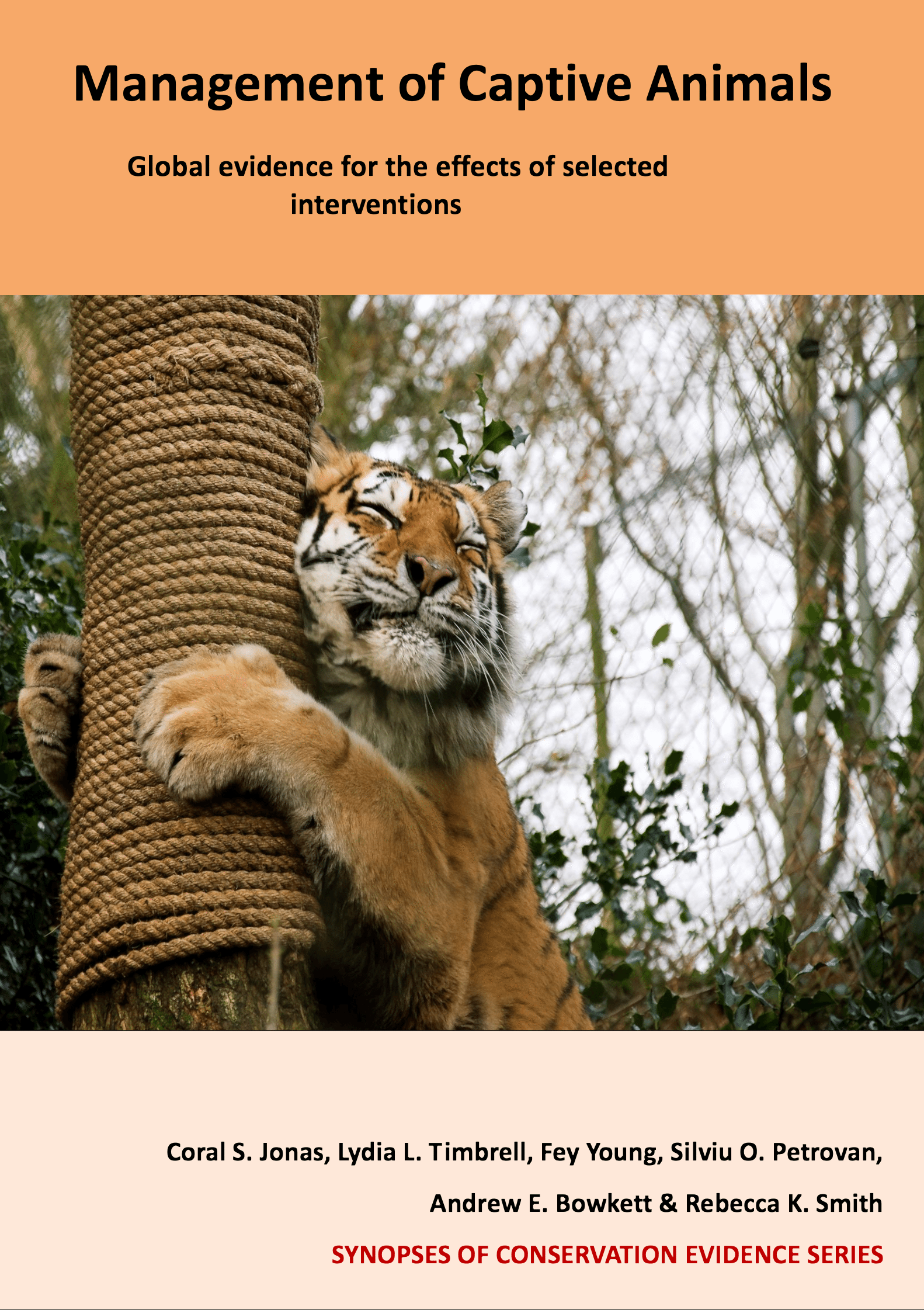Primates: Change the number of feeds per day
Overall effectiveness category Trade-off between benefit and harms
Number of studies: 2
View assessment score
Hide assessment score
How is the evidence assessed?
Effectiveness
70%Certainty
50%Harms
50%
Study locations
Supporting evidence from individual studies
A before-and-after study in 1999 in Japan (Morimura & Ueno 1999) found that when food was given twice a day instead of once a day to a group of chimpanzees Pan troglodytes the amount of time spent feeding increased. On average, feeding time contributed to 7% of the behaviours expressed when one feed was offered per day and 24% when two feeds were offered per day. A group of five chimpanzees was observed for 15 days over five one hour time periods when all food was provided in the afternoon at 15:00 h and when one feed was given between 10:00 h and 11:00 h and a second feed at 15:00 h. (CJ)
Study and other actions testedA before-and-after study in 2012 in the USA (Nevill & Lutz 2015) found that increasing feeds from one to two per day increased hair-eating in baboons Papio hamadryas sp. When one feed was provided, hair eating was seen during 1% of the observations, increasing to 3% with two feeds. Eleven baboons, housed as a social group, were offered their standard feed of 5 kg of monkey diet in the afternoon, which was then split into two, 2 kg feeds, given morning and afternoon. Each monkey was observed over six months and two hours of data were collected on each animal. (CJ)
Study and other actions tested
Where has this evidence come from?
List of journals searched by synopsis
All the journals searched for all synopses
This Action forms part of the Action Synopsis:
Management of Captive Animals
Management of Captive Animals - Published 2018
Captive Animal Synopsis




















